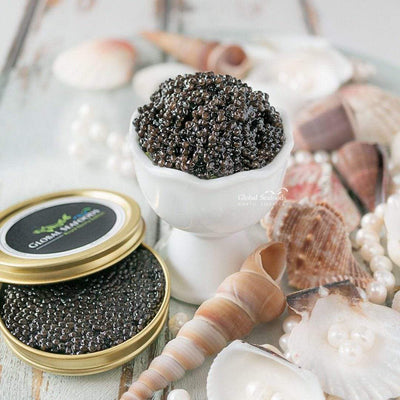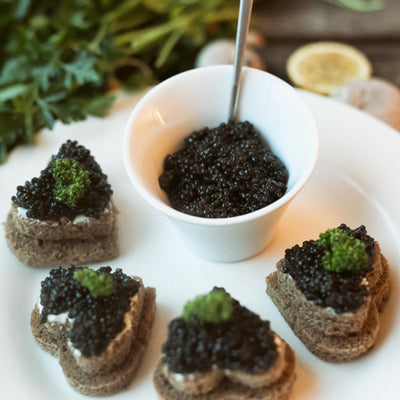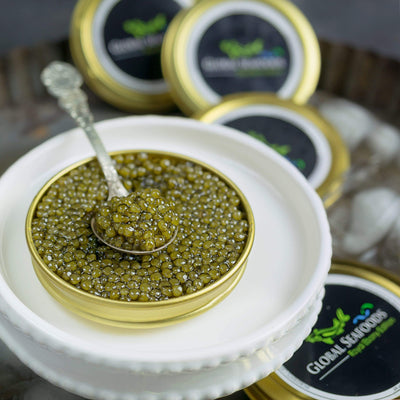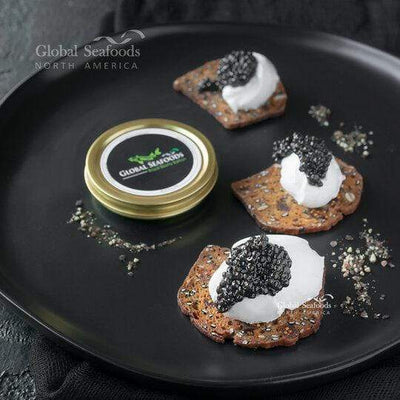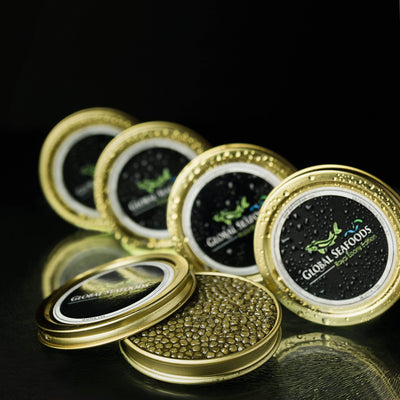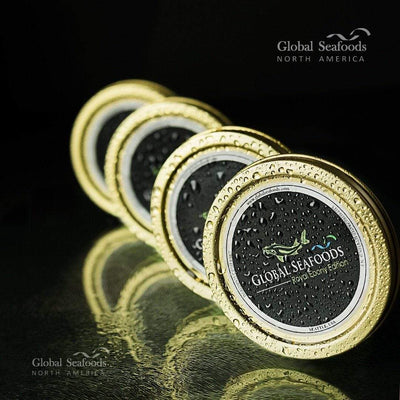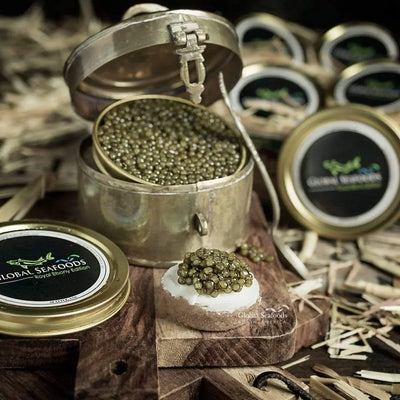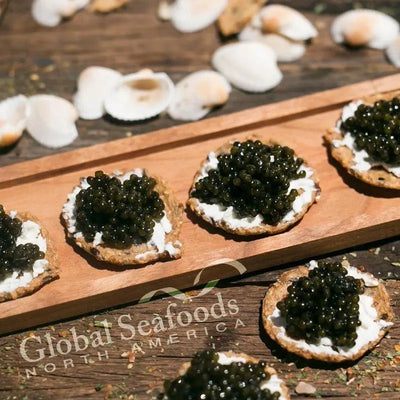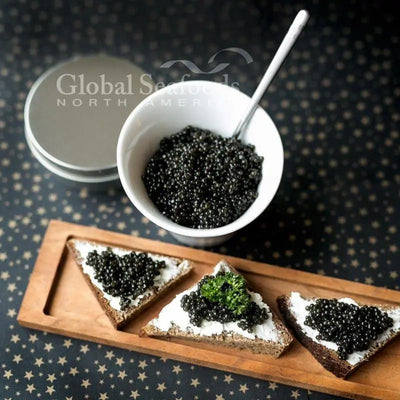How to Cook Black Caviar: A Gourmet Guide to Preparing and Serving Caviar

How to Cook Black Caviar: A Gourmet Guide to Preparing and Serving Caviar
Black caviar is one of the world's most luxurious delicacies, often served raw to preserve its delicate texture and briny flavor. However, some culinary enthusiasts explore cooking caviar to create unique textures and flavors. Cooking black caviar is a delicate process that requires precise techniques to ensure it retains its exquisite taste.
In this comprehensive guide, we’ll cover everything you need to know about cooking black caviar, from selecting the best type to cooking methods, serving suggestions, and expert tips.
Why Cook Black Caviar?
1. Enhancing Flavor and Texture
Cooking black caviar slightly changes its texture, making it firmer while intensifying its nutty, buttery undertones. When heated properly, it can develop a deeper umami richness that complements many gourmet dishes.
2. Unique Culinary Applications
While raw caviar is a delicacy, lightly cooking it allows for creative applications in hot dishes, such as pasta, scrambled eggs, or seafood sauces.
3. Pairing with Other Ingredients
Cooked caviar pairs beautifully with ingredients like butter, truffle oil, mushrooms, cream, and seafood, making it a perfect addition to various dishes.
Selecting the Best Caviar for Cooking
Not all caviar types are suitable for cooking. Some varieties hold their shape and flavor better when heated.
Best Types of Caviar for Cooking:
- Beluga Caviar – Large, delicate eggs with a creamy texture. Best for minimal heat exposure.
- Osetra Caviar – Medium-sized eggs with a nutty flavor, ideal for gentle warming.
- Sevruga Caviar – Smaller eggs with a strong briny taste, holds up well when lightly sautéed.
- White Sturgeon Caviar – Mild and smooth, works well in cooked dishes.
For high-quality options, check out these premium caviar selections:
🔹 Beluga Caviar
🔹 Ossetra Sturgeon Caviar
🔹 Sevruga Sturgeon Caviar
🔹 White Sturgeon Caviar
How to Cook Black Caviar: Best Techniques
Cooking caviar requires minimal heat and careful handling to prevent the eggs from hardening or bursting.
1. Lightly Sautéed Caviar
Steps:
- Preheat a non-stick pan over low heat for 1-2 minutes.
- Do not use oil or butter – caviar releases natural oils.
- Add a small portion of caviar to the pan and gently stir with a silicone spatula.
- Cook for 10-15 seconds until slightly warmed. Do not overcook, as it will turn rubbery.
- Remove immediately and serve over scrambled eggs, pasta, or seafood.
Recommended Caviar for Sautéing:
🔹 Paddlefish Caviar
🔹 Kaluga Caviar
2. Warmed Caviar on Blinis or Toast
Steps:
- Preheat your oven to 200°F (93°C).
- Place blinis or toast points on a baking sheet.
- Spread a thin layer of butter or crème fraîche on top.
- Gently place caviar on top and warm for 30 seconds.
- Serve immediately with a squeeze of lemon.
3. Poached Caviar
Poaching preserves the delicate texture while slightly enhancing the briny taste.
Steps:
- Heat a small pot of salted water to 160°F (71°C).
- Place caviar in a fine-mesh sieve or cheesecloth.
- Lower it into the water and let it sit for 10-15 seconds.
- Remove and serve immediately over seafood or risotto.
4. Caviar-Infused Sauce for Pasta or Seafood
Caviar can be gently melted into a rich sauce for seafood or pasta dishes.
Steps:
- In a saucepan, melt butter over low heat.
- Add heavy cream and let it warm (do not boil).
- Stir in 1 tablespoon of caviar and mix gently.
- Toss with pasta, lobster, or scallops.
Try with:
🔹 Wild Sturgeon Black Caviar
How to Serve Cooked Caviar
1. Classic Pairings
- Soft scrambled eggs with caviar on toast.
- Grilled scallops topped with caviar butter.
- Truffle risotto finished with a spoonful of warmed caviar.
2. Luxury Caviar Appetizers
- Caviar-stuffed oysters
- Lobster medallions topped with caviar
- Blini canapés with warmed caviar & crème fraîche
FAQs About Cooking Black Caviar
Can I fry caviar?
No, frying caviar is not recommended as it destroys its delicate texture.
How long can cooked caviar last?
It’s best to eat cooked caviar immediately. Leftovers should be refrigerated and consumed within 24 hours.
Is it safe to bake caviar?
Yes, but only at low temperatures (below 200°F/93°C) for a few minutes.
Where can I buy the best black caviar?
For the highest-quality caviar, check out these premium selections:
🔹 Caviar Collection
🔹 Black Caviar
🔹 California White Sturgeon Caviar
Conclusion
Cooking black caviar is a refined culinary art that enhances its delicate flavor and texture. Whether lightly sautéed, poached, or served warm on blinis, caviar elevates any dish to a gourmet level. By following these expert techniques, you can savor the luxurious taste of cooked black caviar while preserving its quality.
Looking for premium, sustainably sourced caviar? Explore these top-quality options:
🔹 Ossetra Sturgeon Caviar
🔹 Siberian Sturgeon Caviar
For more caviar recipes and buying guides, subscribe to:
📌 Global Seafoods YouTube Channel
By mastering these cooking methods, you can elevate your black caviar experience and impress your guests with sophisticated, gourmet dishes. Happy cooking! 🍽️
Also in News

How to Make Sea Bream Sushi With Dry-Aged Tuna & Crab Roll — Step-by-Step With Chef Joshua
A complete guide to making Sea Bream sushi at home, including filleting, curing, slicing, and building a Dry-Aged Tuna & Crab sushi roll. Chef Joshua shares professional tips for restaurant-quality results.

Boiled Crab for Game Night: Everything You Need for a Perfect Seafood Party
Take your game night to the next level with a Boiled crab party. Learn the best recipes, cooking tips, and hosting hacks for a memorable seafood feast.

Boiled Crab for Date Night: A Romantic Guide to the Perfect Seafood Feast
Make your next date night unforgettable with a romantic Boiled crab experience. This guide covers everything you need to know, from ambiance to the best crab varieties.

